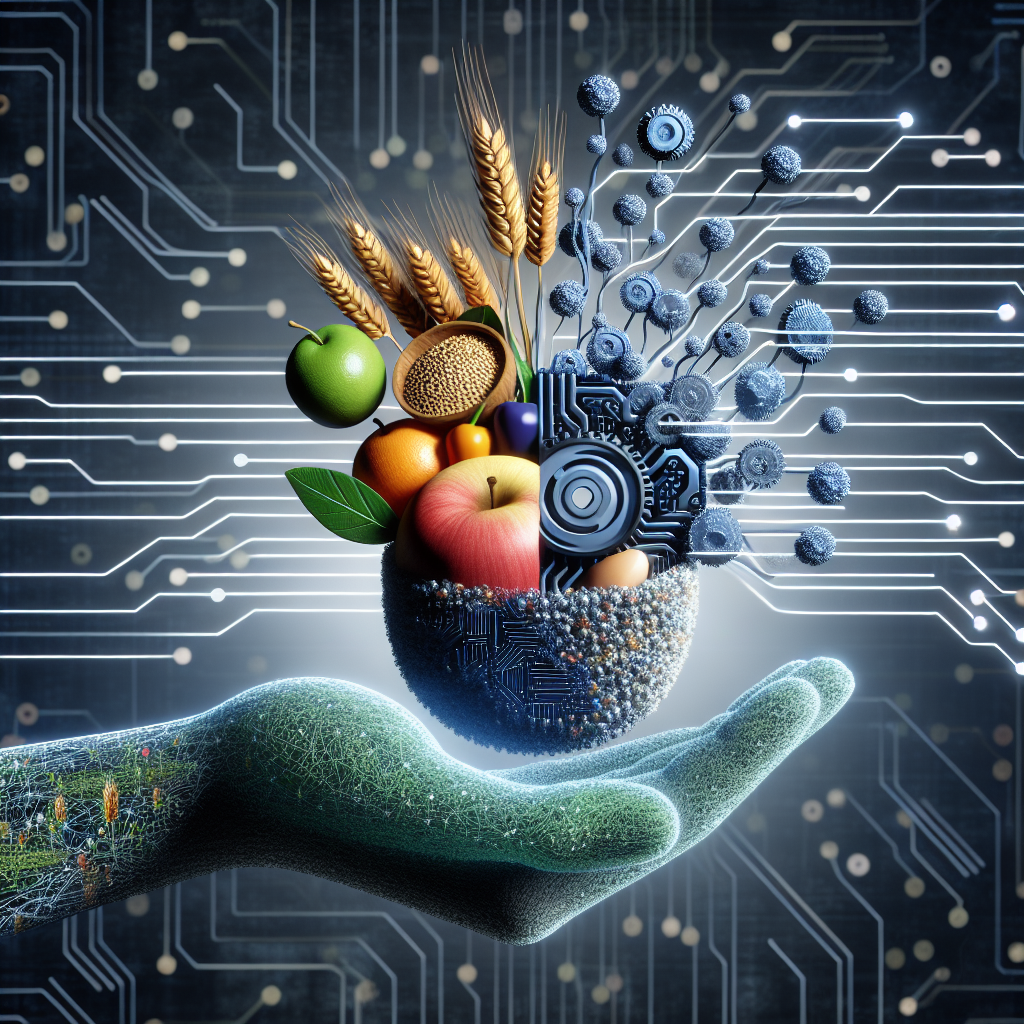Artificial Intelligence (AI) has been revolutionizing various industries, and the food security sector is no exception. With the world population projected to reach 9.7 billion by 2050, ensuring food security has become a top priority for governments and organizations globally. AI integration in food security measures has the potential to enhance productivity, sustainability, and efficiency in the food supply chain. In this article, we will explore how AI is being used to address food security challenges and its impact on the future of agriculture.
AI Integration in Agriculture
One of the key areas where AI is making a significant impact is in agriculture. AI-powered technologies such as drones, sensors, and machine learning algorithms are being used to monitor crops, soil health, and weather conditions. These technologies provide farmers with real-time insights and data-driven recommendations to optimize crop yields and reduce waste.
For example, drones equipped with AI-powered cameras can analyze crop health and identify areas of pest infestation or disease. This allows farmers to take targeted action, such as applying pesticides only where needed, reducing the overall use of chemicals and minimizing environmental impact.
AI-powered sensors can also monitor soil moisture levels and nutrient content, enabling farmers to optimize irrigation and fertilization practices. This not only improves crop yields but also conserves water and reduces the risk of nutrient runoff into water bodies.
In addition, AI algorithms can analyze weather data and predict future climate patterns, helping farmers anticipate and mitigate the impact of extreme weather events such as droughts or floods. By providing early warnings and recommendations, AI technologies can help farmers adapt their practices and minimize crop losses.
Enhancing Food Supply Chain
AI integration is also transforming the food supply chain, from production to distribution to consumption. AI-powered technologies are enabling better inventory management, quality control, and traceability throughout the supply chain.
For example, AI algorithms can analyze historical sales data and consumer trends to predict demand and optimize inventory levels. This helps prevent food waste by ensuring that perishable goods are not overstocked and enables retailers to meet consumer demand more efficiently.
AI-powered sensors and blockchain technology are also being used to track food products from farm to fork, providing transparency and traceability. This allows consumers to verify the authenticity and quality of food products, reducing the risk of food fraud and contamination.
Furthermore, AI technologies are being used to improve food safety standards by automating quality control processes. AI-powered cameras and sensors can detect contaminants or defects in food products, enabling early intervention and preventing contaminated products from reaching consumers.
Overall, AI integration in the food supply chain is enhancing efficiency, transparency, and safety, ultimately contributing to improved food security measures.
Challenges and Opportunities
While the potential of AI integration in food security measures is vast, there are also challenges that need to be addressed. One of the main challenges is the digital divide, particularly in developing countries where access to technology and internet connectivity is limited. Bridging this gap and ensuring equitable access to AI technologies is essential to ensure that all farmers and stakeholders can benefit from these advancements.
Another challenge is data privacy and security concerns. As AI technologies rely on vast amounts of data to make accurate predictions and recommendations, there is a risk of data breaches or misuse. Implementing robust data protection measures and ensuring compliance with privacy regulations are crucial to build trust and confidence in AI-powered solutions.
Despite these challenges, the opportunities presented by AI integration in food security measures are immense. By harnessing the power of AI to optimize agricultural practices, improve food safety standards, and enhance supply chain efficiency, we can create a more sustainable and resilient food system for future generations.
FAQs
Q: How can AI technologies help smallholder farmers in developing countries?
A: AI technologies can provide smallholder farmers with real-time insights and data-driven recommendations to optimize crop yields, reduce waste, and adapt to climate change. For example, AI-powered sensors can monitor soil moisture levels and recommend precise irrigation practices, helping smallholder farmers conserve water and improve productivity.
Q: What are some examples of AI applications in food security measures?
A: Some examples of AI applications in food security measures include drones for crop monitoring, sensors for soil health analysis, machine learning algorithms for weather prediction, and blockchain technology for traceability in the food supply chain.
Q: What are the benefits of AI integration in the food supply chain?
A: AI integration in the food supply chain can enhance efficiency, transparency, and safety. By optimizing inventory management, improving quality control processes, and ensuring traceability, AI technologies can help prevent food waste, reduce contamination risks, and build consumer trust.
Q: How can AI technologies contribute to sustainable agriculture?
A: AI technologies can help farmers adopt more sustainable practices by optimizing resource use, reducing waste, and mitigating the impact of climate change. By providing data-driven insights and recommendations, AI technologies enable farmers to make informed decisions that promote long-term environmental and economic sustainability.
In conclusion, AI integration is revolutionizing food security measures by enhancing productivity, sustainability, and efficiency in the food supply chain. By harnessing the power of AI technologies, we can create a more resilient and sustainable food system to meet the growing demands of a rapidly increasing population.

